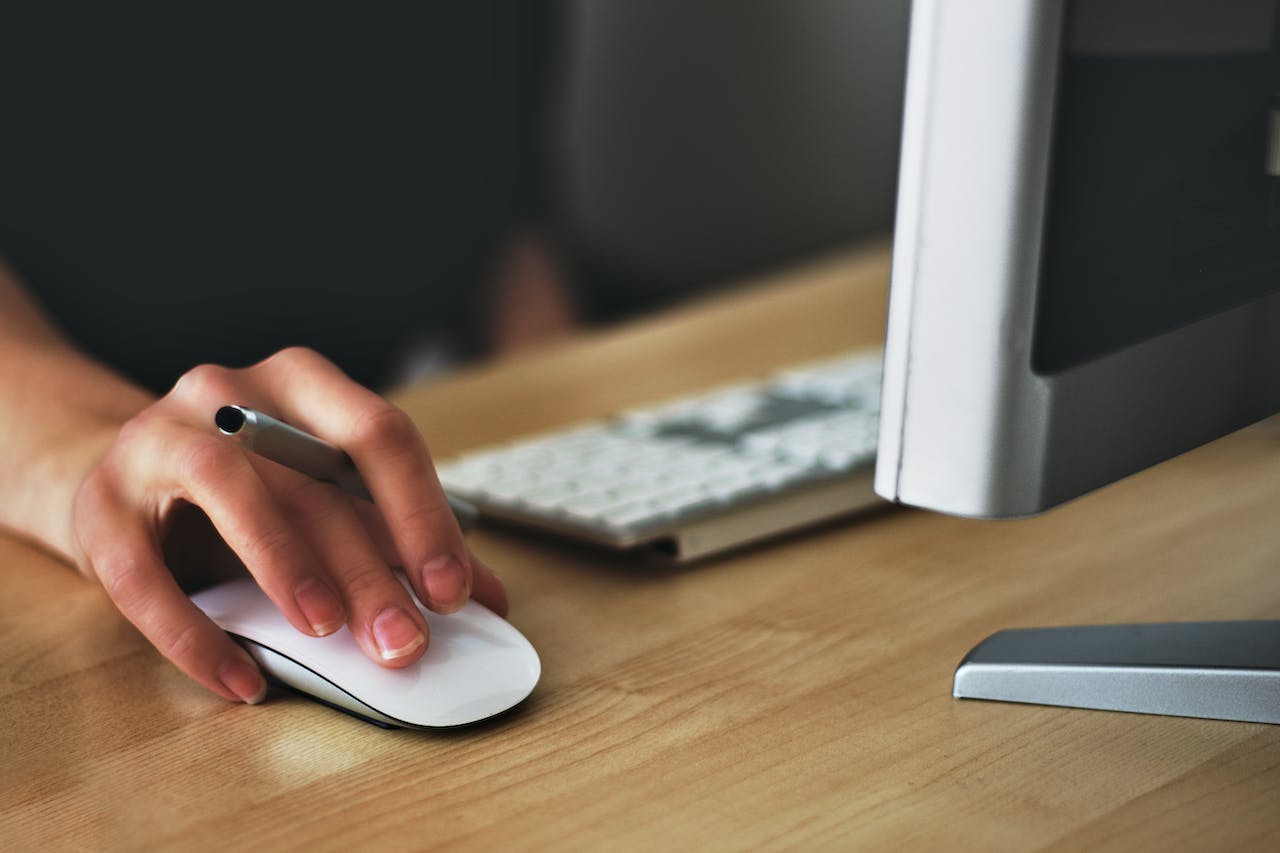How to stay active at a desk job: 5 practical ways
The modern work environment, with its desks, screens, and chairs, can sometimes feel confining, turning us into unintentional statues during our 9 to 5 grind.
Ever feel like you're glued to your desk all day? You're not alone. Most of us spend hours working without moving much, and it's not great for our health or mood.
But guess what? There are simple ways to add more movement to your day, even if you're super busy. These little breaks can boost your energy, focus, and even make work more fun. Ready to find out how? Let's jump right in!
5 ways to move more during the workday
1. Take short, frequent breaks
Did you know that our brains aren’t designed to focus on one thing for super long periods? They crave variety! By taking short, regular breaks, you’re not only giving your mind a breather but also boosting your energy and concentration.
Enter the "20-20-20" rule. It's a neat trick recommended by experts. Every 20 minutes, take a break for about 20 seconds and look at something 20 feet away. It’s particularly handy for those staring at screens all day because it reduces eye strain.
But don’t just stop at eye breaks. Use these moments to stand up, stretch your legs, or do a quick shoulder roll. It's amazing how these mini pauses can refresh you!
And if you’re thinking, “I’ll forget to take breaks,” don’t worry, there are handy apps, like which are designed to remind you gently to take these micro-breaks.
Integrating such brief pauses not only nurtures your physical health but also acts as a productivity booster, keeping your mind fresh and ready for the next task.
Remember, it’s not about taking long breaks but short, frequent ones. They keep the blood flowing, the brain sharp, and the mood upbeat. So next time you’re deep in work, remember the power of a 20-second breather. Your body and brain will thank you.

Source: Pexels
2. Incorporate desk exercises
Desk jobs, for all their comfort, can sometimes leave us feeling stiff and inactive. But who says desks can't be the place for some light workout?
Let's deep-dive into some easily doable desk exercises that can make a world of difference in how you feel throughout the day. Transform your workspace into a mini exercise hub with these super simple yet effective moves
a) Chair squats
How to:
- Begin by standing upright with your chair right behind you.
- As you exhale, lower your body toward the chair, simulating the action of sitting down but stopping just before you touch the seat.
- Push through your heels to stand back up to the starting position.
Benefit: This exercise helps to strengthen your quadriceps, hamstrings, and glutes, improving your overall leg strength.
b) Seated leg lifts
How to:
- While seated on the edge of your chair, extend one leg straight out in front of you.
- Keeping your leg straight, lift it up to hip level, and then slowly lower it back down without letting it touch the ground.
- After several reps, switch to the other leg.
Benefit: This move targets the quadriceps. It's great for toning and increasing endurance in the thigh region.
c) Desk push-ups
How to:
- Stand a few feet away from your desk and place your hands on its edge, slightly wider than shoulder-width.
- Push your feet back until you're at a slant, heels off the ground.
- Lower your body towards the desk, bending your elbows.
- Push back to the start position.
Benefit: Not only do these work your chest, shoulders, and triceps, but they also promote upper body strength without the intensity of a full push-up.
d) Seated torso twists
How to:
- Sit firmly on your chair with your feet flat on the ground.
- Keep your back straight and rotate your upper body to one side, holding onto your armrest or the back of your chair for support.
- Hold for a few seconds, then gently rotate to the opposite side.
Benefit: This movement offers a gentle stretch to the spine and engages the oblique muscles, which are essential for core strength and stability.
Remember, the beauty of these exercises lies in their simplicity and adaptability. No matter how packed your schedule is, sprinkling in a few of these moves throughout the day can make a significant difference.
Not only do they cater to physical well-being, but the mental boost you'll get from these short bursts of activity is truly priceless.
So, the next time you're on a call or waiting for a file to download, why not seize the moment for a mini workout? Small steps toward a healthier workday are always worth it!
Read more: 5 quick and effective workouts for busy schedules

Source: Pexels
3. Stand more, sit less
In today's digital age, the sedentary nature of office jobs can often tether workers to their chairs for hours on end. Such prolonged sitting has been linked to a plethora of health concerns, from cardiovascular issues to muscle strain and fatigue.
Recognizing these impacts, integrating periods of standing into your routine is essential for fostering a healthier work environment.
One effective approach is to incorporate a standing desk into your workspace. A standing desk, which can be adjustable or fixed, enables you to alternate between sitting and standing throughout your day.
This simple change can make a significant difference by increasing your calorie expenditure, improving posture, and even enhancing your mood and energy levels.
Beyond the desk, there are subtle yet impactful ways to stand more during your day. Consider holding stand-up meetings, which can not only inject dynamism into your discussions but also ensure that they remain concise and focused.
Similarly, standing while taking phone calls can serve as a simple reminder to change your posture regularly.
In essence, the practice of standing more and sitting less is not about making drastic changes but instead about weaving small moments of movement into your existing routine.
By mindfully incorporating these shifts, you can create a workday that is not only more active but also more productive and satisfying.
4. Stairs over elevators
The hustle and bustle of modern office life often makes us lean towards the most convenient options, and when it comes to moving between floors, elevators become the go-to choice.
However, opting for stairs can serve as a golden opportunity to weave in some extra physical activity during your workday.
Stair climbing, often overlooked, is a potent cardiovascular exercise. Engaging in this activity, even for a few minutes, can accelerate your heart rate, enhance lung capacity, and tone leg muscles. Moreover, it's an exercise that doesn’t require special gear or additional time carved out of your schedule.
To start this habit, set achievable goals. Initially, you could aim to take the stairs once a day or only climb a certain number of floors before switching to the elevator. As you build endurance, challenge yourself to increase your stair-climbing frequency or the number of floors you cover.

Source: Pexels
5. Optimize the workspace to encourage movement
The layout and design of a workspace play a surprising role in our movement habits. Often, we don't even realise how our environment either encourages or restricts our mobility.
Think about your daily essentials—your printer, the trash can, your file cabinet. If they're within arm's reach, you're missing out on potential moments of movement. A simple tweak? Reposition the essentials. Place them a little farther from your desk, so you have to stand up and take a few steps every time you need them. It’s a stealthy way to get you moving without any conscious effort.
Next up, consider the pathways in your workspace. If there’s a direct route to your colleague's desk or the meeting room, how about creating a slightly longer scenic route? Maybe it goes past a window with a great view or through a space with some greenery. These mini-walks can break the monotony and refresh your mind.
For those working in larger offices or shared workspaces, here’s a golden tip: Utilize communal areas. Instead of emailing the person three desks away, walk over for a brief chat.
Use shared spaces, like lounges or kitchenettes, to stretch your legs and have a change of scenery. Not only does it promote movement, but it also fosters better human interaction.
Lastly, personalize with motivation. Maybe it’s a standing mat with a fun design that invites you to stand more, or perhaps it’s a pedometer on your desk, challenging you to hit a certain number of steps each day. These small additions can serve as daily reminders to prioritize movement.
Revamping your workspace isn’t about making grand changes. It’s about cleverly integrating movement opportunities into your day. These tweaks, though minor, can collectively make a significant impact on your well-being and productivity.
So, roll up those sleeves and let your workspace be a catalyst for a more active day!
Conclusion
The modern work environment, with its desks, screens, and chairs, can sometimes feel confining, turning us into unintentional statues during our 9 to 5 grind. But as we've explored, it doesn't have to be that way. Through tiny shifts in behaviour and workspace adjustments, we can infuse our daily routines with much-needed movement and energy.
We've ventured through the realms of standing desks, integrated exercises, and optimized workspaces—all pointing to the same truth: movement matters.
And it's not just about the physical benefits, though they're plentiful. It's about mental clarity, boosted morale, and the sheer joy of feeling alive even in the middle of a workday!
Cheers,
Friska 🐨
Read next: Why making your bed in the morning can boost your productivity throughout the day
FAQs (Frequently Asked Questions)
1. How often should I take breaks during work?
Ideally, it's good to take a short 5-minute break every hour. This can be a quick stretch, a walk to the water cooler, or even some deep breathing exercises.
2. Can regular movement or breaks distract me from my work?
Initially, it might feel that way. However, these breaks can actually enhance productivity by improving focus, reducing fatigue, and keeping you energised. Over time, you may find that you're able to work more efficiently after a quick movement break.
3. I often forget to move during the day. Any tips to remember?
Setting hourly reminders on your phone or using apps specifically designed to remind you to take breaks can be helpful. Over time, as you establish a routine, it will become more of a habit.
4. Can frequent movement really improve productivity?
Indeed! Short breaks and incorporating movement can boost blood circulation, leading to better concentration and heightened alertness. It's a great way to refresh your mind and stave off afternoon slumps.
Source:
